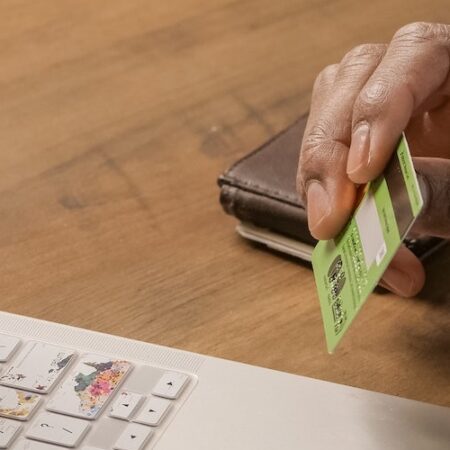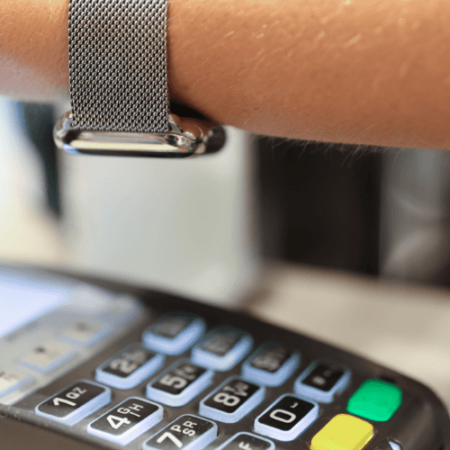 Many people consider a chance to see the world one of the finer things in life. Other people must travel internationally for business. Travel incurs expenses that cannot all be prepaid before leaving on your trip – things like gifts, train or metro travel, tours and eating out. Using a credit card to pay for these expenses can add hidden costs and headaches to your trip if you don’t take a few precautions. It pays to do a little extra planning and preparation over your choice of plastic. Here are 5 tips to minimize the costs and headaches associated with using credit cards abroad.
Many people consider a chance to see the world one of the finer things in life. Other people must travel internationally for business. Travel incurs expenses that cannot all be prepaid before leaving on your trip – things like gifts, train or metro travel, tours and eating out. Using a credit card to pay for these expenses can add hidden costs and headaches to your trip if you don’t take a few precautions. It pays to do a little extra planning and preparation over your choice of plastic. Here are 5 tips to minimize the costs and headaches associated with using credit cards abroad.
Your Magnetic Stripe Credit Card Won’t Work at Most Foreign Terminals
U.S. banks currently issue credit cards using outdated technology – the magnetic stripe. Because magnetic cards are so prone to fraud, most other countries have migrated from them to the more secure EMV (EuroPay, MasterCard and Visa) chipped cards. The terminals used to process EMV cards are totally different from those used to process magnetic stripe transactions – you insert your card rather than swiping it. A terminal set up for EMV technology can’t read a magnetic stripe card.
Some foreign merchants will be able to process your magnetic striped card manually, but if you are faced with using a kiosk, your card cannot be read. You will most likely run into kiosks at train and metro stations.
It will be a big convenience for you to acquire an EMV chipped card before leaving on your trip. Some U.S. banks offer EMV cards, mainly as a convenience to customers who travel abroad. These cards have both a magnetic stripe and chips, so they can also be used at home once you get back from your trip. You’ll need a PIN to use these cards abroad, even if you are using the card as a credit card instead of a debit card, so make sure you get this option set up when activating the card. Foreign merchants require the use of a PIN as an added layer of security when processing EMV transactions.
The banks that issue EMV cards include Chase, American Express, Bank of America, Citibank, US Bank, and USAA. You must specifically ask one of these banks for a program that issues EMV chipped cards – not all banks offer this option.
You won’t have this headache after October 2015, as all U.S. banks are migrating to EMV technology by this date.

You May Get Charged Foreign Transaction Fees
Ninety percent of U.S. credit cards (even chipped cards) will charge you a foreign transaction fee of 3 percent on each charge made abroad. One percent goes to the card network (example: Visa or MasterCard) and the other to the bank who issued you the card. Three percent may not seem like a lot, but it adds up. If you charge $3000 during your travels, you’ve just spent another $90 – a very nice meal out on the town.
Not all cards charge a foreign transaction fee, such as Capital One cards (but they don’t currently have EMV technology) or the Chase Sapphire Card (bonus – this program issues EMV chipped cards!). It pays to do a little research online to find a card that doesn’t charge foreign transaction fees.
When shopping for cards that don’t charge these fees, beware of annual fees that can be quite high (upwards of as $80/year), erasing the advantage of having a no-transaction-fee card.
Your Bank’s Fraud Protection Unit May Shut Down Your Credit Card
Most banks have invested a lot of money in systems that detect unusual transactions by their customers. While banks claim that they “monitor your accounts 24/7 to detect possible fraud,” they do not have human eyes on the activity of individual accounts. What they have is a sophisticated automated statistical analysis system to detect variations in spending behavior by customers. One of the things that can trip the fraud flag is a transaction made outside of the country.
To avoid getting your card put on hold, it’s best to call your credit card customer service and let them know you will be traveling out of the country. When transactions come through that might shut down your card under normal circumstances, the notes on your file should protect your credit line from being frozen.
Even if you do let your bank know of your travel plans, since the system is largely automated, your card can still get shut down so it’s best not to rely on just one form of payment. Having an alternate card will also protect you against loss or theft. Carry the international phone numbers for all of your bankcards should your credit line be frozen or if you need to report a lost or stolen card.
If You Need Cash, an ATM Often Offers the Best Exchange Rate
Foreign money exchanges (even at a bank teller) often charge exorbitant fees and usually do not offer the best conversion rate. If you absolutely need cash, going to an ATM usually offers the best deal, even if you are charged a fee. The exchange rate from the local currency is based on the on the international market conversion rates at the time of the transaction.
You may be able to avoid transaction fees by using an ATM from a bank which has an international partnership with your issuing financial institution. These partnerships vary greatly by region, so it’s worth it to do a little homework and know which bank’s ATMs in each country will not charge fees. Call your credit card company (you’re doing it anyway to let them know of your travel plans, right?), and find out which banks are part of their network.
Never Charge Your Card in U.S. Dollars While Out of the Country
If asked whether you want to make a charge in U.S. dollars or the local currency, never choose U.S. dollars – you are getting a less than favorable exchange rate. In addition, you will usually be charged a foreign transaction fee, even though the purchase was made with U.S. dollars. (There are a few high-end exceptions: American Express Platinum holders, for example, aren’t charged such fees.) This is extra profit for the merchants and is charged in addition to your credit card’s foreign transaction fees (if your card program charges them).
You may like the convenience of knowing how much you are paying in U.S. dollars and not doing the conversion math in your head, but you are paying a big premium for that service. Your transactions will be automatically converted to U.S. dollars on your monthly billing statement, so there is no need to pay extra at the terminal for the advance knowledge. If the merchant refuses to run the transaction in the local currency, walk away. Both VISA and MasterCard forbid the practice of insisting a charge be made U.S. dollars.
Questions about credit repair?
Chat with an expert: 1-800-255-0263






